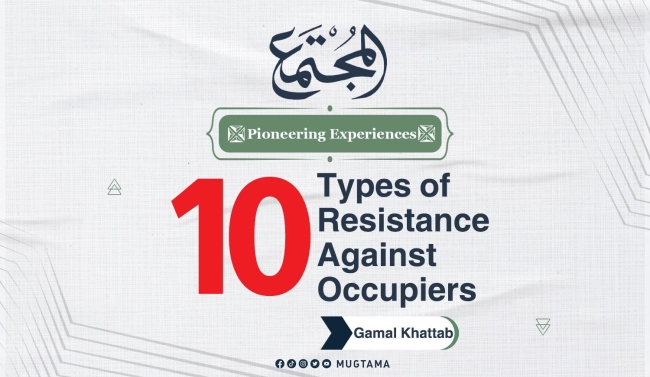10 Types of Resistance Against Occupation Forces Featured
Occupation forces have been a recurring presence throughout history, eliciting various forms of resistance from the occupied population. Understanding and categorizing the diverse methods employed in such struggles allows us to analyze the complexities involved. Here we are going to explore and discuss ten key types and examples of resistance against occupation forces, elucidating their significance in challenging and ultimately dismantling oppressors.
- Armed Resistance:
Armed resistance encompasses organized efforts that utilize weaponry to confront occupation forces directly. The Irish Republican Army's (IRA) armed campaign against British occupation in Northern Ireland is a notable example. Despite the inherent risks, armed resistance can disrupt the occupiers and inspire others to join the cause.
- Guerrilla Warfare:
Similar to armed resistance, guerrilla warfare relies on surprise attacks, sabotage, and hit-and-run tactics. The French Resistance during World War II, targeting German forces, showcases the effectiveness of this tactic. Guerrilla warfare allows small, mobile groups to challenge larger, better-equipped occupation forces.
- Civil Disobedience:
Civil disobedience involves nonviolent resistance through acts such as protests, strikes, and sit-ins. Mahatma Gandhi's use of nonviolent civil disobedience against British rule in India exemplifies its potential power. By disrupting everyday life and challenging the authority of occupation forces, civil disobedience can pressure oppressors into addressing grievances.
- Underground Movements:
Underground movements operate clandestinely, conducting activities such as intelligence gathering, spreading propaganda, and offering assistance to the occupied population. The White Rose resistance group in Nazi Germany engaged in distributing anti-Nazi leaflets, encouraging dissent against Hitler's regime. Such movements provide essential support while minimizing risk.
- Cultural Resistance:
Cultural resistance subverts occupation forces by preserving or promoting local customs, heritage, and identity. The suppression of indigenous languages and traditions by colonial powers has prompted various resistance movements. The resurgence of Maori culture in New Zealand served as a powerful means of resistance against British colonialism.
- Economic Resistance:
Economic resistance entails disrupting the occupiers' economic interests through boycotts, sabotage, or black market activities. The Salt March led by Gandhi, where Indians produced their salt instead of purchasing British salt, demonstrates the power of economic resistance. By undermining the occupiers' financial stability, economic pressure is exerted to achieve political objectives.
- Diplomatic Resistance:
Diplomatic resistance aims to garner international support, expose occupation forces' atrocities, or legally challenge their actions. The Palestinian Liberation Organization's use of diplomacy to gain recognition and support against Israeli occupation serves as a compelling example. By engaging globally, diplomatic resistance aims to delegitimize the occupiers and garner backing for the occupied population.
- Media and Propaganda:
Media and propaganda resistance involve disseminating counter-narratives, exposing occupation forces' injustices, and inspiring collective action. The Samizdat movement during the Soviet era disseminated alternative publications, countering state-controlled narratives. By controlling the flow of information, this resistance form challenges the occupiers' legitimacy.
- Education and Intellectual Resistance:
Education and intellectual resistance involve fostering critical thinking and resistance through academia, research, and intellectual outputs. Underground universities during the Nazi occupation, such as the University of Warsaw's secret courses, exemplify this form of resistance. By preserving knowledge and promoting intellectual dissent, this resistance form sustains hope and encourages future resistance.
- Non-Cooperation and Passive Resistance:
Non-cooperation and passive resistance encompass acts of resistance such as evasion, non-compliance, and refusal to cooperate with occupation forces. The non-cooperation movement led by Indian nationalist leaders against British rule exemplifies this resistance form. By obstructing the occupiers' control and asserting autonomy, non-cooperation erodes their authority.
The examples of resistance against occupation forces outlined above represent diverse and powerful means to challenge oppressive rule. Different contexts demand different strategies, and the effectiveness of each method hinges on the occupied population's unity, determination, and adaptability. By understanding these types of resistance, we gain insight into the complex dynamics involved in struggles against occupation forces and the indomitable spirit of those who resist.


